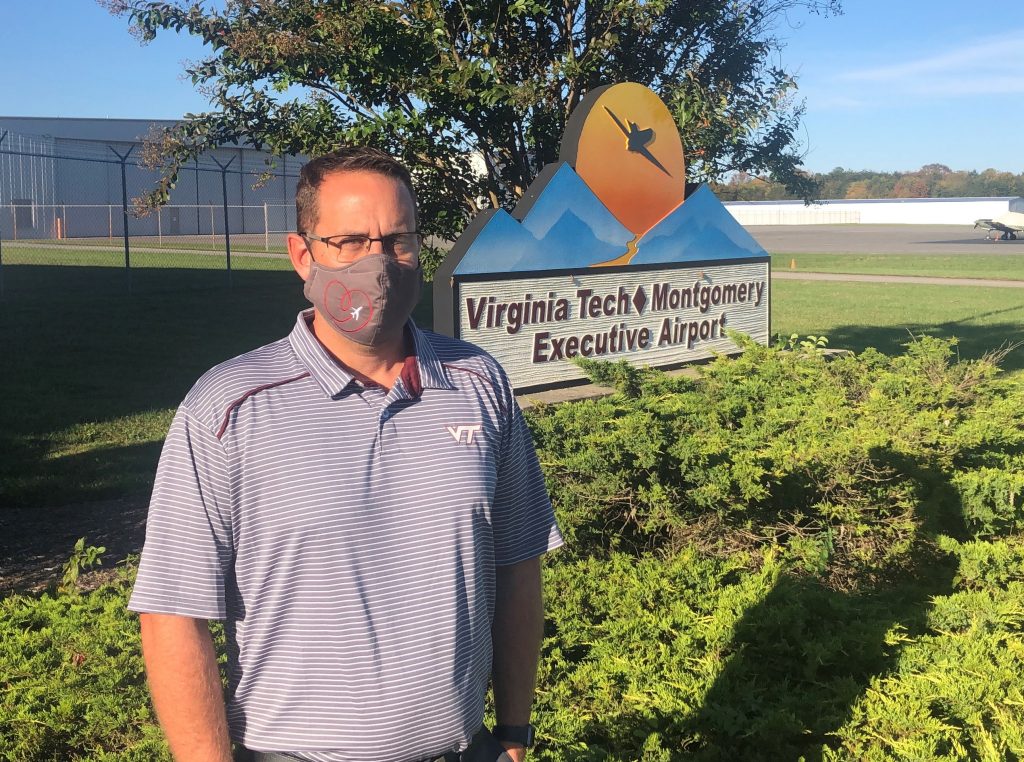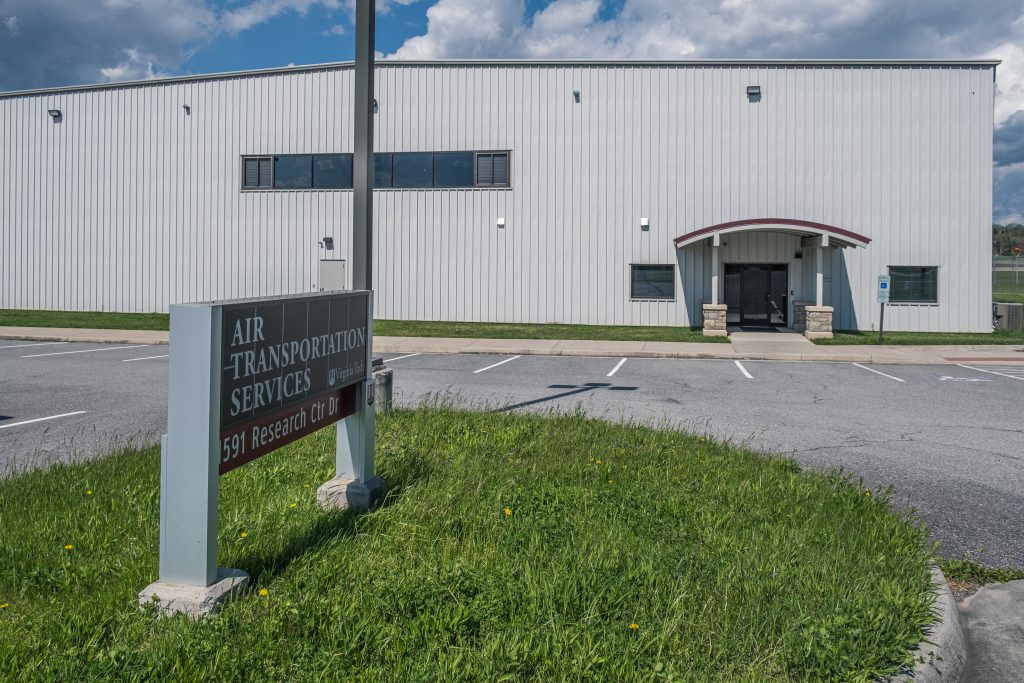
Keith Holt is the executive director of the Virginia Tech Montgomery Executive Airport, which is nearing completion of a runway extension project. Photo courtesy of the Virginia Tech Montgomery Executive Airport.For the passengers of the nearly 14,000 annual flights traveling through the Virginia Tech Montgomery Executive Airport, the 310-acre airport in Blacksburg serves as a gateway into all the New River Valley has to offer.
For business travelers, it is the launching pad for new economic development opportunities in the region.
For innovators, it is the conduit to the cutting-edge research and discovery that take place at Virginia Tech and nearby technology and manufacturing companies.
For those learning to fly, it’s the solid ground upon which they find themselves after their first successful landing.
For Keith Holt, executive director of the Virginia Tech Montgomery Executive Airport, it is a place that brings in countless new opportunities for the region each day.
Holt recently joined the airport in July, replacing Michael St. Jean, who led the airport since 2002 before retiring. Holt previously served as manager of the New River Valley Airport.
The Virginia Tech Montgomery Executive Airport is conveniently located adjacent to Virginia Tech on Research Center Drive, steps away from the Virginia Tech Corporate Research Center and mere minutes away from the Blacksburg campus. It facilitates a number of business activities, including aerial inspections, photography, surveying, agricultural spraying, emergency medical aviation, and flight training. It also serves as a gateway for business and political leaders, law enforcement, public charters, Virginia Tech Athletics, recreational flying, and rescue flights.
Virginia Tech Air Transportation Services also operates flights out of its hangar at the airport. The university unit provides safe, on-demand air transportation for Virginia Tech employees or employees of university-related corporations on official university business. It is staffed by five pilots and supported by a flight operations manager.
The range of traffic through the airport — business, academic, recreational, and more — is a microcosm, representative of the dynamic New River Valley economic ecosystem as a whole and the educational, business, and innovation communities that continue to flourish there. The airport is an engaged partner in supporting this ecosystem’s transportation needs.
As of December 2019, there were more than 80 technology companies in the region – and growing – according to Onward NRV, a public-private, regional economic development organization that strives to attract and retain world-class jobs, investment, and talent in the New River Valley.
Over the past 20 years, facilities on the Blacksburg campus have grown by 4.6 million gross square feet. As highlighted in the Campus Master Plan, the university has planned for up to an additional 7 million gross square feet in facilities growth over the next 30 years.
“With all of the exciting advancements in academia, technology, and medicine taking place on a daily basis here, the Virginia Tech Montgomery Executive Airport is an asset to the region,” said Holt.
“It is essential our operations are well-positioned to support the current and future transportation needs of this thriving ecosystem. One critical component in ensuring effective operations is the airport’s shared governance structure. This is where the Virginia Tech Montgomery Regional Airport Authority comes in.”

Authority membership includes one appointed member each from Virginia Tech, Montgomery County, and the towns of Blacksburg and Christiansburg, as well as one at-large member that is appointed by all four entities.
The governing body meets monthly to develop a common vision for the airport and discuss topics of interest, including finance, procurement, and capital projects – like the runway extension project that is nearing completion this fall.
“All members of the Montgomery Regional Airport Authority are driven by a shared motivation to deliver safe, high-quality airport operations that enhance the region’s air transportation offerings,” said Christopher H. Kiwus, vice president for campus planning, infrastructure and facilities at Virginia Tech. Kiwus represents the university on the authority.
“We believe in the significant impact air transportation and the Virginia Tech Montgomery Executive Airport can have in Virginia Tech’s future, expanding industry in the region, as well as bringing in new jobs, talent, and visitors to the area,” Kiwus said.
This sharp alignment among regional stakeholders has been critical in advancing the airport’s runway extension project set to be finalized this fall. The runway has been extended from 4,539 feet to 5,500 under the federally funded project that has been under construction for the past three years.
The extended runway and the completion of a pair of corporate hangars in 2018 are expected to have a substantial effect in boosting corporate traffic through the airport.
The runway expansion will attract companies looking to the region as a hub for business and innovation. The extension of the runway allows the airport to now accommodate roughly 72 percent of the business jet fleet operating in today’s market, including Citation, Bombardier Challenger, and Gulfstream Jets.
“Even amidst the COVID-19 pandemic, the airport’s future outlook is positive. The extended runway and new hangars are set to help catalyze economic development and fuel innovation and technology in the region for years to come,” said Holt.


